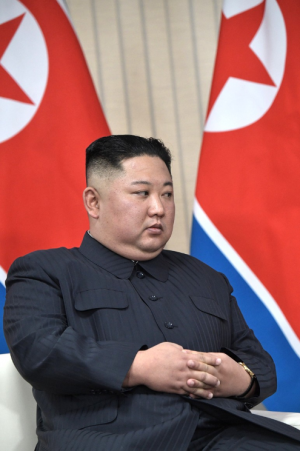Editor’s Note: The following is a preview of the latest edition of the APAC Risk Newsletter, presented by Diplomat Risk Intelligence. To read the full newsletter, click here to subscribe for free.
Kim Jong Un was last seen on April 11. As I write this, the North Korean leader has been absent from public view for nearly three weeks. That in itself isn’t terribly unusual; Kim has had prolonged absences before. What is unusual, however, is that Kim remained incognito through North Korea’s most important holiday—the April 15 “Day of the Sun” holiday to commemorate his grandfather Kim Il Sung’s birthday—and also was nowhere to be seen at a reported April 14 coastal defense cruise missile test.
There has been plenty of ink spilled—by expert and inexpert commentators alike—about what Kim’s absence might suggest about his health or the health of his regime. I‘ll try not to contribute to the speculation here; instead, it’s worth dwelling on what we can know in the current situation.
First, on the backs of a single-sourced report from the Seoul-based DailyNK suggesting that Kim had undergone a cardiovascular procedure and was in recovery, rumors exploded about his potential health. The story of the North Korean leader’s health became a global top headline almost overnight, leading to questionable reports that he had died (including from celebrity gossip website, TMZ).
I can’t tell you whether Kim is dead or alive; we can look to the precedents for how the state propaganda apparatus handled his father and grandfather’s deaths and illnesses to surmise that Kim probably is not yet dead. At least, we’re probably not looking at North Korea pullinga Weekend at Bernie’s scenario. Speculation has arisen that exactly something like this might be going on given that the Korean Central News Agency and Rodong Sinmun, North Korea’s external news wire and ruling party newspaper respectively, have reported on Kim sending letters to foreign leaders amid his prolonged absence.
Second, what we do know is interesting enough and does lend some credence to the DailyNK account of a possible recovery from a surgery. Certainly, the basic premise of the original story is plausible: the morbidly obese Kim is known to be a compulsive chainsmoker and hardly a picture of perfect health. As with many highly personalized dictatorships where the leader is a monolith, the leader’s health can represent a tremendous single point of failure and risk.
Two bits of open source analysis published recently by colleagues over at 38North and NK News suggest that Kim is at his favorite coastal retreat at Wonsan, a city on the east coast of North Korea that has received tremendous and disproportionate economic development attention under Kim’s tenure. First, 38North spotted Kim’s personal train near his Wonsan compound in satellite imagery. Second, NK News’ Colin Zwirko spotted a series of movements by Kim’s personal yacht around Wonsan.
The story that South Korean officials have presented so far is that Kim is alive and well. Moon Chung-in, an unofficial advisor to South Korean President Moon Jae-in on foreign affairs, noted that Kim was in Wonsan. We still don’t know why exactly he’s there and why he didn’t make an appearance for his expected April 15 showing at the Kumsusan palace in Pyongyang to pay respects to his grandfather. One possibility may be related to COVID-19, with Kim perhaps having concerns about public appearances if the pandemic may have spread within the KPA’s Guard Command (the elite unit that guards the Kim family) or among senior Worker’s Party officials.
What Kim’s disappearance has done in the meantime is unleash an explosion of speculation around what happens the day after his death. This is useful and important to consider in the case of a nuclear-armed monolithic dictatorship like North Korea. A lot of attention has zeroed in on Kim’s sister, Kim Yo Jong, who has gained particular prominence in recent years as her brother’s confidante. She has also increased her profile within the ruling Worker’s Party.
Other candidates for succession include Kim’s older brother, Kim Jong Chol, but given that he was passed over by their father for the succession in the first place, he may not be next in line now. Kim Jong Un does not have any children old enough to inherit the supreme leadership just yet, prompting some analysts to consider the possibility of a Kim Yo Jong regency. More pessimistic takes have raised the possibility of a brutal power struggle, a familiar idea that also found currency during North Korea’s previous two successions, both of which went off without a hitch.
If Kim is dead, we’ll only find out when North Korea’s state apparatus deems it fit. When Kim Jong Il died, it took two days for the information to emerge—and intelligence agencies in South Korea and the United States learned of his death when the rest of us did. If Kim’s alive, well, we’ll see him soon enough.
Bottom Line: No one knows exactly how Kim Jong Un is faring, but he appears to be at a familiar coastal retreat—possibly waiting out a bad COVID-19 situation, or possibly recovering from a health procedure or illness.
To read the entirety of the latest edition of the APAC Risk Newsletter, presented by Diplomat Risk Intelligence, click here to read and subscribe for free.

































